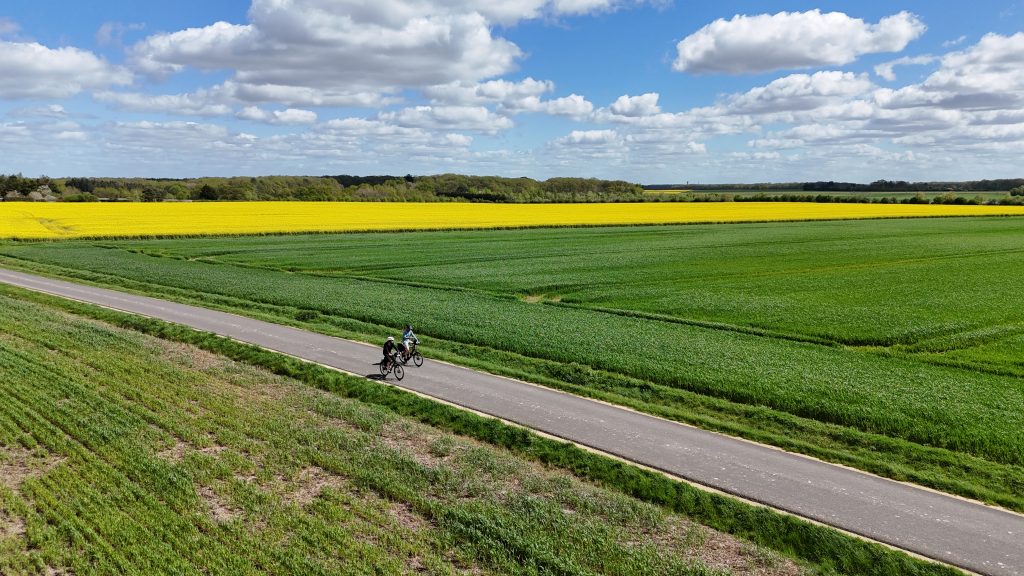
Which is better?
Picture this: you’re pedaling through the lavender fields of the Loire Valley, the morning sun casting long shadows across ancient stone villages. Or perhaps you’re cycling along Amsterdam’s tree-lined canals, stopping for coffee and stroopwafels whenever the mood strikes. Maybe you’re winding through Portugal’s Douro Valley, vineyard terraces stretching endlessly toward the horizon.
Cycling tours offer an incredibly intimate way to experience Europe—slower than a car, faster than walking, and with an authentic connection to the landscape that’s hard to match. But as you start planning your European cycling adventure, you’ll face a fundamental choice: should you organize everything yourself, or join a guided tour?
Both approaches have passionate advocates. DIY enthusiasts love the freedom and adventure of crafting their own journey. Guided tour participants rave about the seamless experience and insider knowledge their guides provide. The truth is, there’s no universally “right” answer—but there is likely a right answer for you.
This article will help you understand the key differences between do-it-yourself and guided bicycle tours, examining the advantages and drawbacks of each approach so you can make an informed decision about your next European cycling adventure.
What Is a DIY Bicycle Tour?
A do-it-yourself bicycle tour puts you in complete control of every aspect of your cycling vacation. You research and plan your route, book your own accommodations, arrange meal stops, handle your luggage transport (or carry it yourself), and navigate using maps, GPS, or smartphone apps.
This approach means you’re essentially creating your own custom cycling tour from scratch. You choose when to start each day, where to stop for lunch, how many miles to cover, and which sights to prioritize. If you discover a charming village that’s not on your planned route, you can spontaneously decide to explore it. If you’re feeling energetic, you can add extra miles; if you’re tired, you can cut the day short.
DIY tours typically involve significant upfront research. You’ll spend time studying maps, reading guidebooks, checking elevation profiles, and coordinating logistics like bike rentals, hotel bookings, and potentially shipping luggage between stops. The trade-off for this preparation time is often lower costs and maximum flexibility once you’re on the road.
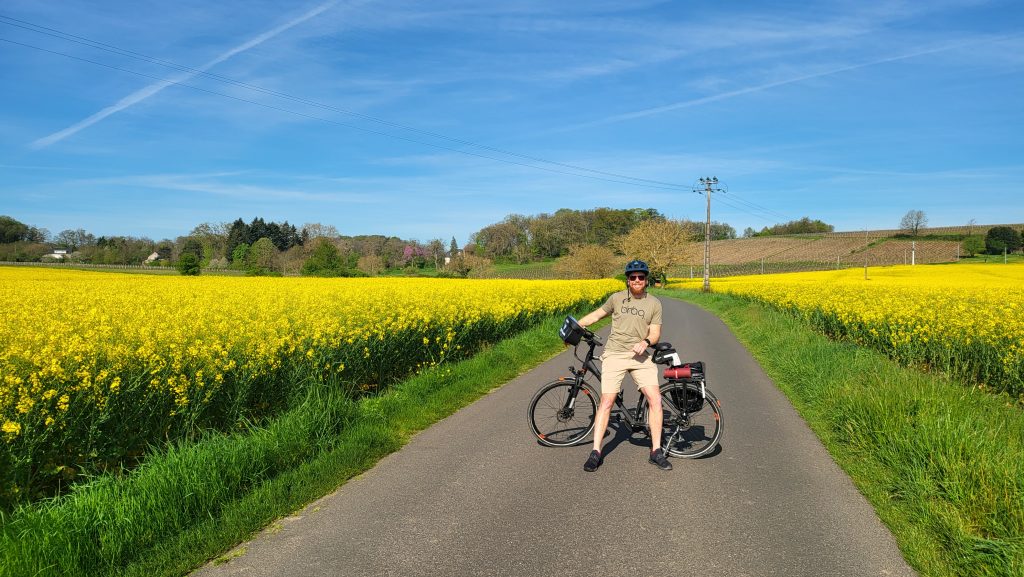
What Is a Guided Bicycle Tour?
A guided or group bicycle tour is essentially a carefully orchestrated cycling experience where a tour company handles all the logistics while you focus on pedaling and enjoying the scenery. The tour operator arranges accommodations, provides route guidance, handles luggage transfers, organizes meals, and typically includes support vehicles and experienced guides who know the local area intimately.
Most guided tours include several key services: daily route briefings, mechanical support for your bike, a support van that can pick you up if you’re struggling or want to skip a section, and knowledgeable guides who share insights about local history, culture, and hidden gems you might otherwise miss.
The level of guidance varies by company and tour style. Some guided tours for Americans traveling in Europe feature large groups with set daily schedules, while others offer small-group experiences with more flexibility. Many fall somewhere in between, providing structure and support while still allowing some personal choice in how you experience each day.
Guided tours often include cultural experiences beyond just cycling—wine tastings in France’s Loire Valley, cooking classes in Italian villages, or visits to historic sites in Bruges that might be difficult to access or fully appreciate without local expertise.
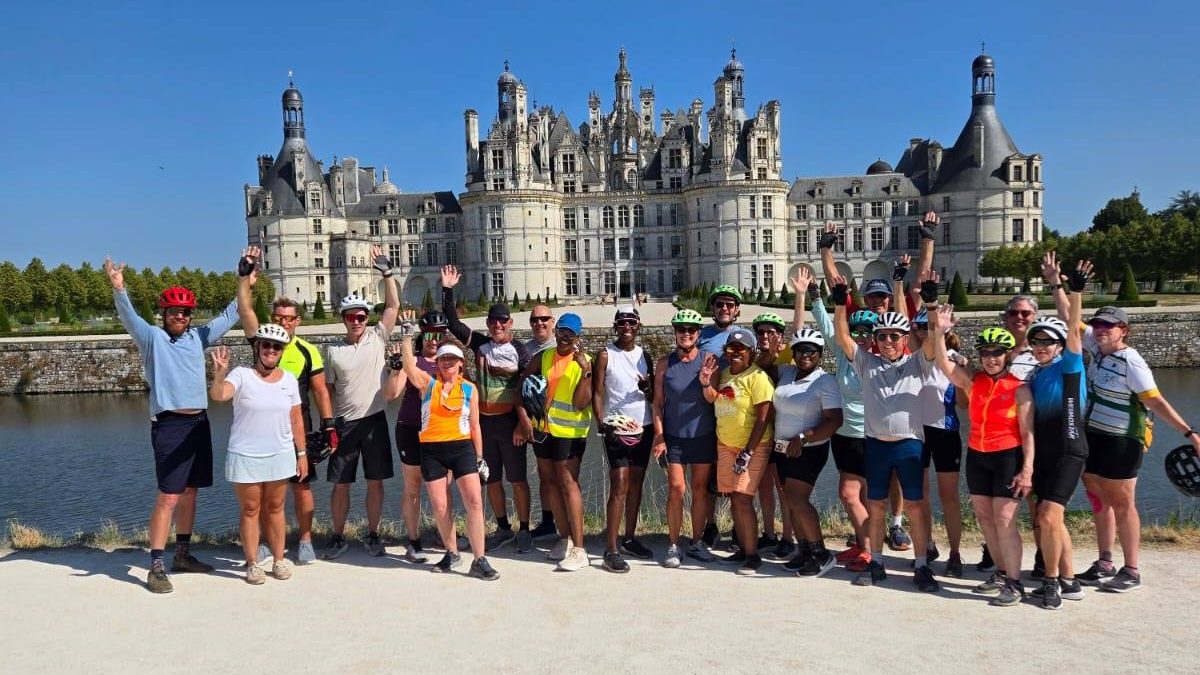
Pros and Cons of DIY Bicycle Tours
The Advantages of Going Solo
Complete Freedom and Flexibility DIY touring offers unmatched spontaneity. You can sleep in when you want, take a rest day if you fall in love with a particular town, or push harder if you’re feeling strong. There’s no group to keep up with and no predetermined schedule constraining your experience.
Cost Control Self-guided bicycle trips typically cost significantly less than guided alternatives. You can choose budget accommodations or splurge on luxury hotels based on your preferences. You control meal costs by mixing restaurant dining with picnics or simple grocery store purchases.
Personal Adventure and Achievement Successfully navigating foreign countries on your own creates a genuine sense of accomplishment. There’s something deeply satisfying about figuring out directions, communicating in a foreign language, and solving problems independently.
Customized Experience Your interests drive everything. Love art museums? Build in extra time in cities with great collections. Passionate about wine? Plan your route through premier wine regions. Want to focus on challenging climbs or prefer flat coastal routes? The choice is entirely yours.
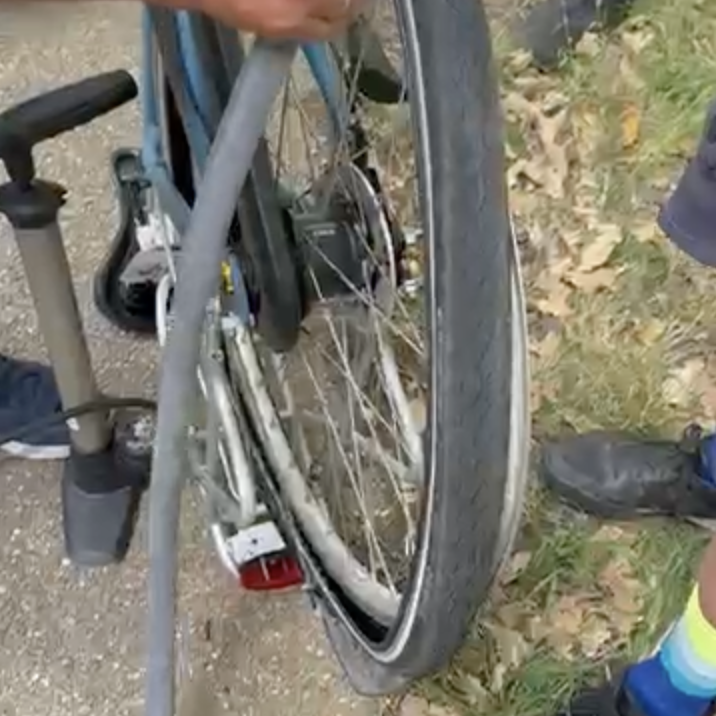
The Challenges of DIY Tours
Logistical Complexity Planning a multi-day cycling tour involves countless details: researching bike-friendly routes, booking accommodations that can handle cyclists and their gear, arranging luggage transport, understanding local cycling laws, and having backup plans for weather or mechanical issues.
Navigation Stress Getting lost is part of adventure, but it’s less fun when you’re tired, it’s getting dark, and you can’t find your hotel. While GPS helps, rural areas sometimes have spotty service, and not all cycling routes are well-marked for international visitors.
Limited Local Knowledge Without a guide, you might pedal past fascinating historical sites, miss the best local restaurant, or choose a route that locals know to avoid. Guidebooks help, but they can’t match the insights of someone who lives in the area.
No Support Network If something goes wrong—a serious mechanical issue, injury, or unexpected weather—you’re on your own. This can be particularly challenging for couples over 50 who might be less comfortable handling bike repairs or finding alternative transportation in a foreign country.
Language Barriers While many Europeans speak English, dealing with accommodations, bike shops, or medical issues in French, Dutch, or Portuguese can be stressful when you’re already tired from cycling.
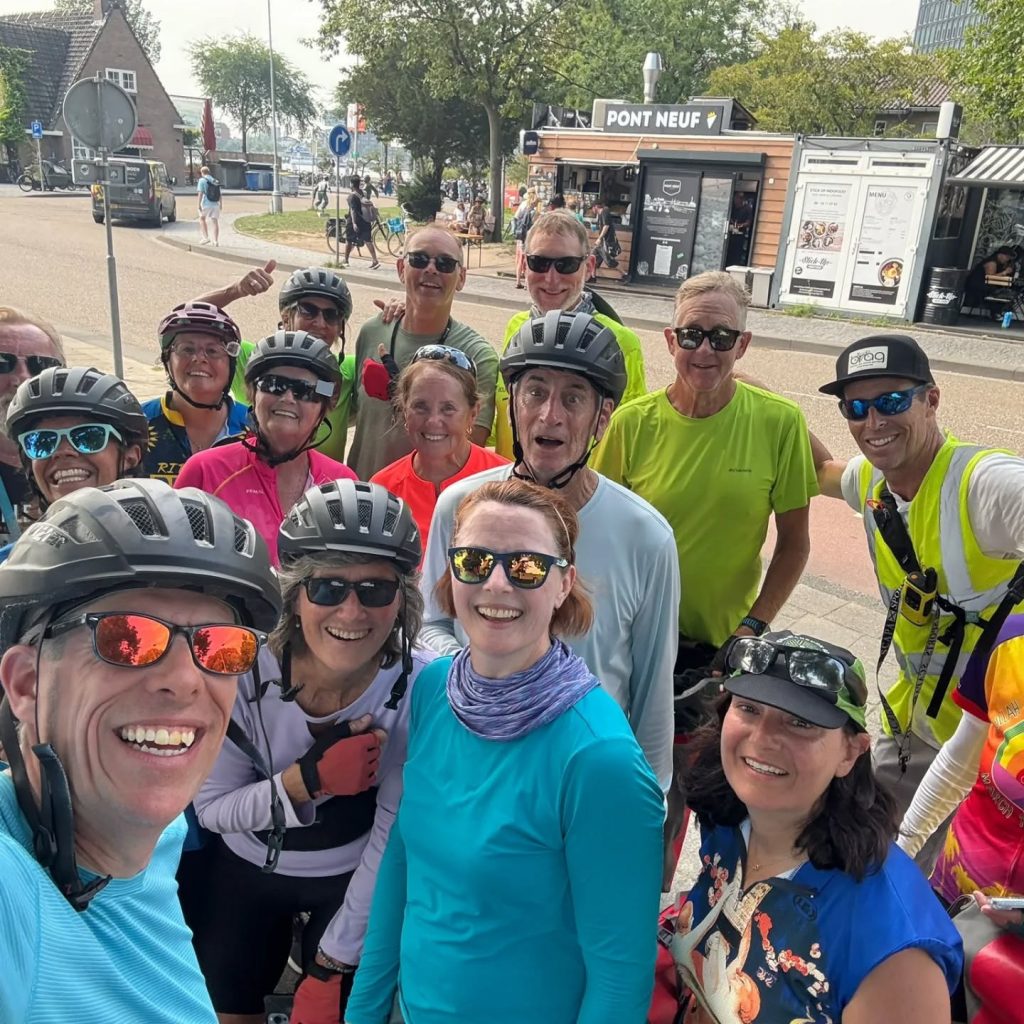
Pros and Cons of Guided Bicycle Tours
The Benefits of Professional Support
Expert Route Planning and Local Knowledge Guided bike tours in Europe benefit from years of experience and local relationships. Your guides know which roads have the least traffic, the most scenic views, and the best places to stop for authentic regional cuisine. They can share stories and historical context that transform a pleasant ride into a truly educational experience.
Seamless Logistics Forget worrying about luggage transport, hotel reservations, or restaurant bookings. Everything is arranged in advance, allowing you to focus entirely on cycling and enjoying the experience. Your bags magically appear in your room each evening, and someone else handles any issues that arise.
Built-in Support System Guided tours include mechanical support, medical assistance, and backup transportation. If you’re having an off day, struggling with a climb, or dealing with weather issues, help is never far away. This peace of mind is particularly valuable for Americans cycling tours in unfamiliar territory.
Social Experience Many travelers, especially couples, enjoy meeting like-minded people on group tours. Sharing meals, comparing stories from the day, and cycling with others can enhance the overall experience and create lasting friendships.
Cultural Immersion Good guides provide access to experiences you’d never find on your own: private wine tastings, cooking classes with local families, or after-hours visits to normally crowded tourist sites.
The Drawbacks of Group Tours
Higher Costs Guided tours typically cost more than DIY alternatives. You’re paying for expertise, support, and convenience, which comes at a premium. For budget-conscious travelers, this can be a significant deterrent.
Less Flexibility While some guided tours offer options, you’re generally expected to follow a predetermined schedule. If you want to spend an extra day in a charming village or skip a planned activity, it may not be possible without leaving the group.
Group Dynamics Not every group gels perfectly. You might find yourself cycling with people whose pace, interests, or personalities don’t mesh with yours. Most tour companies work hard to match participants appropriately, but it’s not always perfect.
Predetermined Experience The route, accommodations, and activities are chosen for you. While this eliminates decision-making stress, it also means you might miss places that would have particularly appealed to your interests.
Which Option Is Right for You?
Choose DIY If You:
- Have significant international travel experience and feel comfortable navigating foreign countries independently
- Are experienced cyclists who can handle basic bike maintenance and repairs
- Have time for extensive trip planning and enjoy the research process
- Prioritize cost savings and want maximum control over your budget
- Prefer complete flexibility in your daily schedule and route choices
- Speak some of the local language or are comfortable dealing with language barriers
- View problem-solving and navigation as part of the adventure rather than a source of stress
Choose Guided Tours If You:
- Want to maximize your time exploring rather than handling logistics
- Prefer having expert local knowledge and cultural insights included in your experience
- Value the security of having support readily available for mechanical or medical issues
- Are interested in social aspects and enjoy meeting other travelers
- Have limited time for detailed trip planning
- Are newer to international cycling or cycling in general
- Want access to exclusive experiences and locations that would be difficult to arrange independently
- Are comfortable with higher costs in exchange for convenience and expertise
Hybrid Options Worth Considering
Many tour companies now offer self-guided tours that split the difference between DIY and fully guided experiences. Biking France for example typically include pre-planned routes with GPS navigation, luggage transfers, and hotel bookings, but without daily guides or group travel. This can be ideal for travelers who want logistical support without sacrificing independence.
For destinations like the Netherlands, France, Portugal, and Bruges, consider your comfort level with the local cycling infrastructure. The Netherlands has exceptional bike paths and cycling culture, making DIY tours more feasible for beginners. Portugal’s mountainous terrain and France’s varied landscape might benefit more from guided expertise, especially for intermediate cyclists tackling challenging routes.
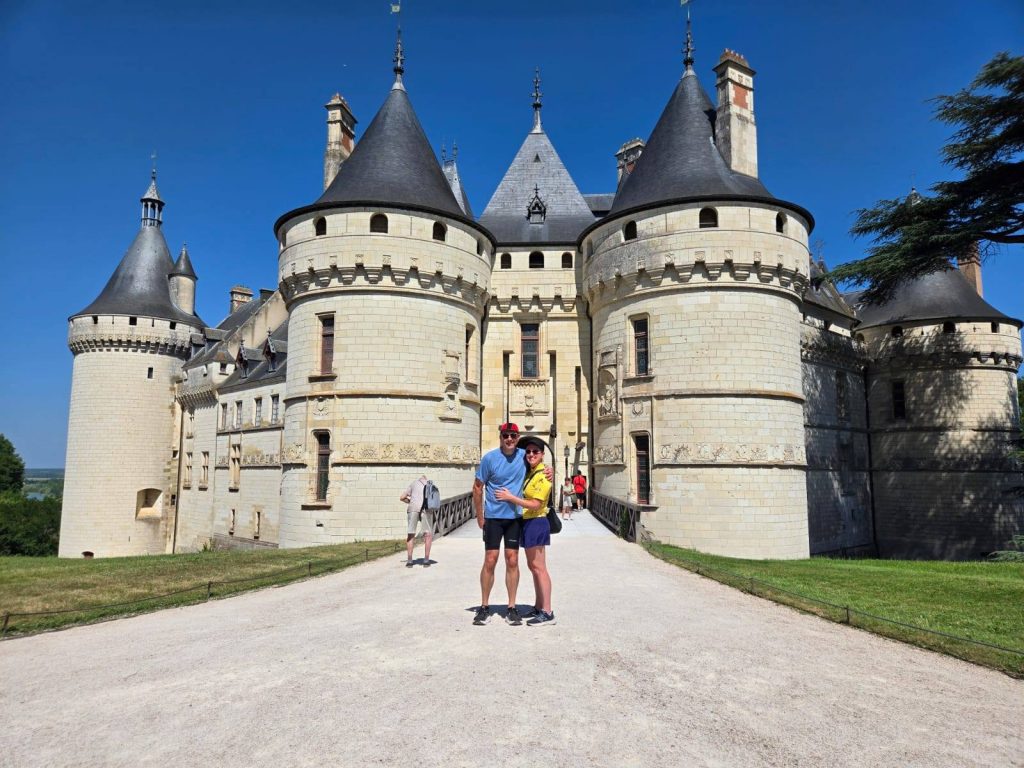
Making Your European Cycling Dreams a Reality
Both DIY and guided bicycle tours can create incredible memories and provide unique windows into European culture and landscapes. The “best” choice depends entirely on your personal preferences, experience level, and what you hope to get from your cycling adventure.
DIY tours offer unmatched freedom and can be incredibly rewarding for travelers who enjoy planning and problem-solving. They’re often the choice of seasoned cyclists who want complete control over their experience and budget.
Guided tours excel at providing seamless, culturally rich experiences with expert support and social connections. They’re particularly valuable for travelers who want to maximize their vacation time exploring rather than coordinating logistics, and for those who appreciate having local expertise readily available.
For many American couples over 50 embarking on their first European cycling adventure, guided tours often provide the perfect balance of adventure and security. The cultural insights, logistical support, and built-in expertise can transform a good cycling vacation into an extraordinary one.
Whatever you choose, the important thing is getting out there and experiencing Europe from the unique vantage point that only cycling can provide. Whether you’re navigating Portuguese coastal roads on your own or following an expert guide through French wine country, you’re in for an unforgettable adventure.
Ready to start planning your European cycling adventure? Consider exploring BRAG International’s carefully crafted guided tours through Portugal’s stunning coastline, France’s most scenic regions, the Netherlands’ iconic landscapes, and the medieval charm of Bruges. Each tour is designed specifically for American travelers who want to experience Europe’s cycling culture with expert guidance and seamless support.
Frequently Asked Questions
Are guided bike tours worth it?
For most travelers, especially those new to international cycling or European travel, guided bike tours provide excellent value. While they cost more upfront, they include expert route planning, local cultural insights, logistical support, and peace of mind that can make your vacation significantly more enjoyable and memorable. The cost often balances out when you factor in the time saved on planning and the exclusive experiences typically included.
Can you do a bike tour on your own?
Absolutely! Many cyclists successfully plan and execute their own European bike tours. DIY touring requires more preparation time and comfort with independent travel, but it offers complete flexibility and often costs less. Success depends on your experience level, language comfort, and willingness to handle logistics and potential challenges independently.
What fitness level do I need for a cycling tour?
Most European cycling tours accommodate a range of fitness levels, typically requiring the ability to comfortably ride 20-40 miles per day on varied terrain. You should be able to cycle for 2-4 hours with breaks and handle some hills. Many tours offer multiple route options daily, allowing stronger and more casual cyclists to meet at the same destination. Guided tours often include support vehicles for those who need assistance or want to skip challenging sections.
